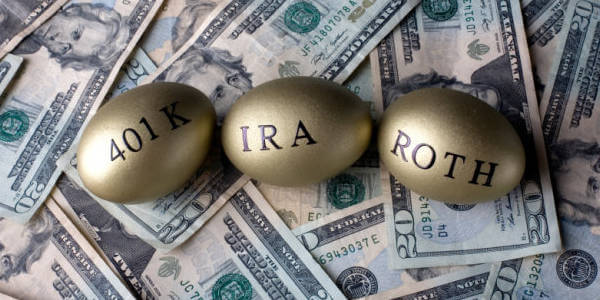Retirement planning is a critical aspect of financial management, and choosing the right investment options can greatly impact a retiree’s future. With the ever-growing popularity of Exchange-Traded Funds (ETFs), retirees now have access to diverse investment opportunities that cater to their specific needs and goals.
In this article, we will explore the best ETFs for retirees, focusing on stability, income generation, conservative options, diversification strategies, tax-efficient accounts, and real-life examples of successful ETF portfolios.
Whether you are already familiar with ETFs or just starting your retirement planning journey, this comprehensive guide will provide you with valuable insights to help you build a secure and profitable retirement portfolio.
Understanding the Needs of Retirees in the Investment World
Retirees face unique challenges when it comes to their investments. As they transition from a regular income to relying on their savings, understanding their needs becomes paramount in navigating the investment world. One crucial aspect for retirees is the importance of stable income.
Unlike younger investors who may prioritize growth and capital appreciation, retirees seek investments that provide a steady stream of income during their golden years.
The ability to cover living expenses without depleting savings is essential for maintaining financial security throughout retirement. Retirees cannot afford unpredictable dips in their investment returns, as they rely on this income to sustain their lifestyle.
Therefore, stability and consistent returns are key factors when selecting suitable investments. By focusing on assets that offer reliable cash flow, retirees can ensure a steady income stream that meets their ongoing financial requirements.
However, while stable income is vital for retirees, it must be balanced with the need for growth. Inflation and rising healthcare costs can erode purchasing power over time, making it necessary to combat these factors through effective investment strategies.
Retirees must carefully consider their risk tolerance when constructing their investment portfolios.
Striking the right balance between low-risk assets that provide stability and higher-risk assets that offer potential growth becomes crucial in maximizing long-term returns while safeguarding against market volatility.
This balancing act ensures that retirees can enjoy both the security of stable income and the potential for wealth accumulation to address future financial needs.
In summary, understanding the needs of retirees in the investment world involves recognizing their desire for stable income during retirement while also accounting for inflation and rising healthcare costs over time.
By striking a careful balance between low-risk assets and higher-risk investments within their portfolios, retirees can meet both short-term financial security needs and long-term growth objectives.
Exploring the Benefits of ETFs for Retirees
ETFs offer retirees several advantages that make them appealing investment vehicles. First, ETFs provide instant diversification by holding a basket of securities across different asset classes or sectors. This reduces risk and provides exposure to various investment opportunities without the need to manage multiple stocks or bonds.
Second, ETFs typically have lower expense ratios compared to actively managed funds. This cost efficiency is important for retirees who rely on their investments for income. By minimizing fees, more returns can be retained, boosting portfolio performance.
Finally, ETFs offer flexibility in trading as they can be bought and sold throughout the trading day at market prices. This allows retirees to react quickly to market conditions or seize short-term opportunities.
Overall, ETFs are attractive options for retirees seeking sustainable income and long-term growth potential. With instant diversification, low expenses, and trading flexibility, ETFs empower retirees with the tools needed for financial stability in retirement.
Top ETFs for Retirees: Focusing on Stability and Income Generation
Retirees face unique challenges when investing their savings, with stability and income generation being crucial concerns. Exchange-traded funds (ETFs) offer a balanced investment approach that provides both stability and a reliable income stream.
Among the options available, dividend-focused ETFs are particularly appealing to retirees seeking stability and income.
Dividend-focused ETFs invest in companies with a history of consistent dividend payments, offering retirees a steady stream of income. Some top choices include the Vanguard Dividend Appreciation ETF (VIG), iShares Select Dividend ETF (DVY), and Schwab U.S. Dividend Equity ETF (SCHD).
When evaluating these ETFs, retirees should consider factors such as historical performance, dividend yield, expense ratio, and stability metrics like standard deviation and beta.
By carefully analyzing these factors alongside their personal investment objectives and risk tolerance, retirees can select the most suitable dividend-focused ETF for their retirement portfolio.
Investing in stable and income-generating ETFs allows retirees to maintain financial security while enjoying a consistent stream of passive income during their golden years.
Conservative Options for Retirees: Bond ETFs and Low-Cost Index ETFs
Retirees seeking stability and income generation can consider bond ETFs and low-cost index ETFs. Bond ETFs offer steady returns through interest payments from government bonds, corporate bonds, or municipal bonds. They have lower volatility compared to equity-based investments, making them suitable for retirees.
Different types of bond ETFs include government bond funds (less risky), corporate bond funds (higher yields but slightly higher risk), and municipal bond funds (potential tax advantages).
Retirees should be aware of interest rate risk when investing in bond ETFs. Rising interest rates can impact returns, but holding until maturity reduces short-term fluctuations. Low-cost index ETFs provide long-term growth without high costs.
They replicate market index performance and offer cost efficiency, diversification, transparency, and stability.
Popular low-cost index ETF options for retirees include Vanguard Total Stock Market ETF (VTI) for exposure to the entire U.S. equity market, iShares Core S&P 500 ETF (IVV) for broad U.S. large-cap equity exposure, and Schwab U.S. Broad Market ETF (SCHB) for diversified exposure to the U.S. equity market.
Retirees should consider investment objectives, risk tolerance, and desired asset allocation when selecting these options for their portfolios. By diversifying between bond ETFs and low-cost index ETFs, retirees can achieve a balanced portfolio that meets their financial goals while prioritizing stability and potential growth.
Diversification Strategies for Retirement Portfolios: Sector-Specific and Global ETFs
Diversifying retirement portfolios is crucial for mitigating risk and enhancing long-term returns. Sector-specific ETFs allow retirees to target specific industries without needing to select individual stocks. Examples include the Technology Select Sector SPDR Fund (XLK) and the Health Care Select Sector SPDR Fund (XLV).
However, investing in sector-specific ETFs carries risks tied to industry performance, which retirees should carefully evaluate.
Global diversification through international and emerging market ETFs offers additional growth opportunities and reduces concentration risk. Options like Vanguard FTSE Developed Markets ETF (VEA) and iShares MSCI Emerging Markets ETF (EEM) provide exposure to markets outside the US.
This access to global growth, risk mitigation, and currency diversification can benefit retirees.
When incorporating sector-specific or global ETFs into retirement portfolios, retirees should consider their risk tolerance, currency preferences, and long-term goals. Thorough research is essential for informed decision-making.
In summary, sector-specific and global ETFs are valuable diversification strategies for retirement portfolios. Evaluating risks associated with sector-focused investments and considering personal factors will help retirees achieve their financial goals while managing risk effectively.
Tax-Efficient Retirement Account Options: Maximizing Returns through Smart Tax Planning
Retirees must consider the tax implications of their investment decisions to optimize returns. Different retirement accounts have varying tax treatments that can significantly impact portfolio performance.
One option is the Traditional IRA, where contributions may be tax-deductible and taxes on gains are deferred until retirement withdrawals. The Roth IRA, on the other hand, uses after-tax dollars for contributions but offers tax-free withdrawals in retirement.
A 401(k) is an employer-sponsored account that allows pre-tax contributions and defers taxes on gains until withdrawal.
By effectively utilizing these tax-efficient accounts, retirees can maximize returns while minimizing tax liabilities. It’s important to evaluate each option based on income levels, expected tax brackets, and long-term goals. Seeking guidance from a financial advisor or tax professional is recommended for personalized advice.
In summary, understanding how different retirement accounts are taxed is crucial for optimal returns in retirement. By leveraging options like Traditional IRAs, Roth IRAs, and 401(k)s, retirees can strategically manage taxes and achieve a balance between maximizing investments and minimizing taxes paid.
How to Choose the Right ETFs for Your Retirement Portfolio
Selecting the right ETFs for your retirement portfolio requires careful consideration. Start by assessing your risk tolerance and long-term investment objectives. Factors such as age, time horizon, income needs, and comfort with market volatility will influence your asset allocation and ETF selection.
Practical aspects like expense ratios, liquidity, and historical performance also come into play. Low expense ratios optimize long-term returns, while sufficient liquidity ensures easy buying or selling without significant price impact. Historical performance provides insights into an ETF’s track record relative to its benchmark index.
To make the best choices for your retirement portfolio, strike a balance between cost efficiency, trading accessibility, and consistent performance. By evaluating these factors, you can align your investments with your financial goals and create a secure retirement plan.
Case Studies: Real-Life Examples of Successful ETF Portfolios for Retirees
Analyzing real-life examples of successful retiree portfolios provides valuable insights into effective asset allocation strategies. These case studies showcase how retirees combine different ETFs to achieve their financial goals while managing risk.
Popular combinations include dividend-focused ETFs, bond ETFs, low-cost index ETFs, sector-specific ETFs, and global ETFs. By studying these cases, retirees gain inspiration and guidance for constructing their own retirement portfolios.
Diversification through a tailored selection of ETFs can help retirees strike a balance between income generation and capital preservation, setting them up for a financially secure retirement.
[lyte id=’3_NT-ZcZtII’]





